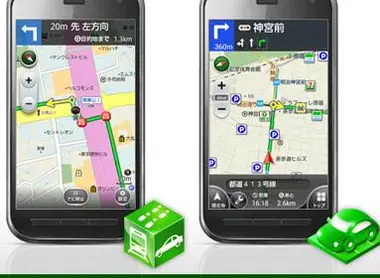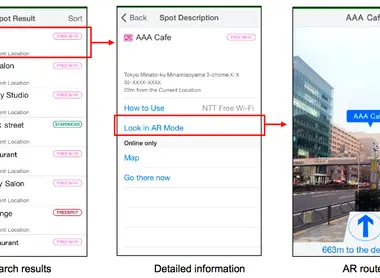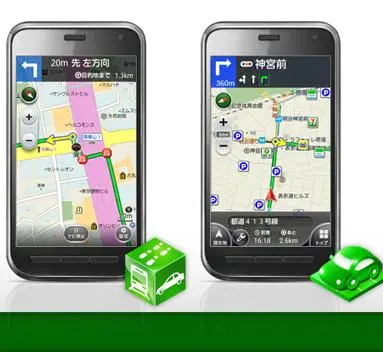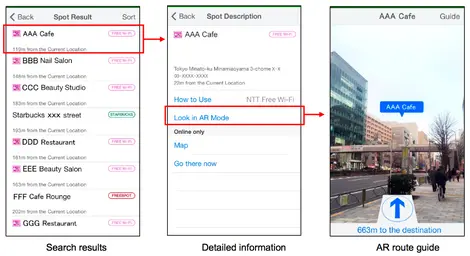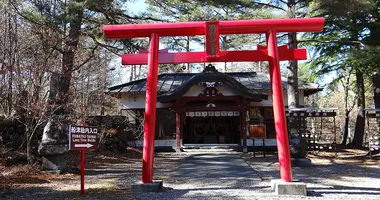Free Wi-Fi Japan
- Published on : 25/03/2014
- by : G.L.
- Youtube
Wireless travel
Connecting to the Internet has become an essential part of any trip to Japan, whether it's to find your way around Tokyo's meandering transport system, communicate with friends and family, or share your discoveries on social networks. Although Japan is one of the most technologically advanced countries in the world, Internet access for foreign tourists can sometimes represent an unexpected challenge. Fortunately, many free options now exist, although their quality and availability vary considerably from place to place. Let's take a look at how you can benefit from free wifi in Japan, as well as paid alternatives to guarantee a reliable connection during your stay.
Free wifi access points in public places
The Japanese government has been gradually expanding free wifi access in public places to meet the growing needs of tourists. In the run-up to the Tokyo 2020 Olympic Games, a vast plan was deployed to offer free wifi throughout Japan, with the ambitious goal of covering 30,000 tourist locations for a total of 130,000 hotspots. This initiative was designed to increase the number of foreign tourists by around 1.46 million per year.
In major cities like Tokyo and Kyoto, you'll now find numerous free wifi hotspots in public spaces. In Tokyo, the metropolitan government has set up over 630 free wifi hotspots in tourist locations such as the metropolitan government headquarters, parks, gardens and cultural centers. To connect, search for the network "FREE_Wi-Fi_and_TOKYO", then register with an e-mail address or social network account.
In Kyoto, the city has also deployed hundreds of wi-fi hotspots in collaboration with KDDI and INFINITI, offering free connection for up to three hours at a time. Similarly, Osaka and Nara Park now offer their own "free wifi" service. However, it's important to note that these free networks are often victims of their own success - the connection can be saturated at peak times, and throughput can be quite low.
Free wifi in accommodation and commercial establishments
Most modern hotels in Japan now offer free wifi access for their guests. In international chains and newer establishments, you'll generally have a fast, stable connection directly in your room. For example, the APA hotel chain usually offers a very good connection with dedicated wifi access in every room.
However, the situation can be different in traditional ryokan and small minshuku-style accommodations, especially if you're traveling off the beaten track in mountainous or rural areas. In these establishments, wi-fi access may be limited to communal areas, or sometimes completely unavailable, with some rooms having only an Ethernet LAN connection. It is therefore advisable to check the availability of wifi in your chosen accommodation when booking.
Large chain cafés and restaurants are also excellent options for free connections. Starbucks Coffee is Japan's leading free Internet provider, with over 1,000 cafés nationwide. To take advantage of it, simply select the "at_STARBUCKS_Wi2" network, open your browser, tap "Connect to Internet", then accept the terms of use. The service operates only during café opening hours, generally until 9 or 10 pm.
The McDonald's and Tully's Coffee chains also offer free wifi access in most of their establishments. Since 2016, McDonald's has provided a free wifi network in around 1,500 of its restaurants across Japan. The connection is generally easy to access and requires no registration, but stability can vary depending on the number of people connected simultaneously.
Free wifi networks in Japanese airports and transport hubs
When you arrive in Japan, major international airports offer free wifi in their terminals, so you can get online as soon as you set foot in the country. Narita airport has its own "FreeWiFi-NARITA" network in terminals 1 and 2 (but not in terminal 3, reserved for low-cost flights). Similarly, Haneda airport offers the "HANEDA-FREE-WIFI" network in its three terminals, with no registration required and available in several languages including French.
In stations and transport systems, the situation has improved considerably in recent years. Since 2012, the national railway company JR has set up its own free Internet service "JR-EAST_FREE_Wi-Fi" accessible within a fifty-meter radius around the main train and subway stations in Tokyo, as well as at Narita and Haneda airports. To connect, simply select this network, click on "Register now", enter your e-mail address and confirm. The JR connection lasts up to three hours, but you can reconnect as often as you like.
All stations on the Yamanote line (Tokyo's famous circular line) now have free hotspots, as does the Shinkansen Tohoku connecting Tokyo to northern Honshu. JR East has also extended its free wifi system to stations in Kyoto, Osaka, Shin-Osaka, and several other major Japanese cities.
Since May 2018, free wifi service has been gradually rolled out on JR East Shinkansen (Tohoku, Joetsu, Hokuriku and Akita), although the service does not operate in tunnels. However, to benefit from it, it may be necessary to sign a contract with a telephone operator, which is generally complicated for foreign tourists.
Specific applications and services for free connection
To facilitate your connection to the various free wifi networks available in Japan, several specialized applications have been developed. Among the most useful is the Navitime for Japan Travel app, available free of charge on Google Play and theApp Store. This app enables you to locate free wifi networks all over Japan offline, and can be used in two ways: by geolocation (the app locates you and suggests free wifi spots in order of proximity) or by search (type in the name of a site or subway station to see available spots).
The Japan Connected-Free Wi-Fi application is also very practical. It unifies the registration process for over 150,000 free Wi-Fi zones in Japan, in 16 different languages. Once you've downloaded it and completed your initial registration, you'll be automatically connected to all the wifi hotspots you've ever used, even if only once. You'll be able to use the Internet immediately when you come within range of any compatible hotspot.
Likewise, the Japan Free Wifi application will show you the nearest of 200,000 hotspots throughout Japan. These useful apps to download before you leave will save you precious time and frustration on your travels.
For travelers on Japan Airlines (JAL), since 2014 the airline has been offering all its foreign passengers 7 days' free Internet access via Wi2/Wi300 wifi hotspots (around 200,000 access points). A login and password are given to passengers during the flight to take advantage of the service. The airline also offers a dedicated application, JAL Explore Japan Wi-Fi, for easy connection to the archipelago's wi-fi hotspots.
Japanese operators offer free wifi to tourists
Japan's major telecom operators have developed specific offers for foreign tourists. Since July 2015, Softbank, Japan's largest provider of wifi hotspots, has been offering visitors free access to its 400,000 hotspots ("FREE Wi-Fi PASSPORT") throughout Japan. To take advantage of this service, simply dial *8180 from a telephone connected to the Softbank telephone network to obtain a password dictated by an English-language voice mailbox. You can then spot the Softbank logo in restaurants, cafés, major railway stations, hotels and other places to connect.
The Seven & i Holdings group (which notably owns Seven-Eleven konbini) has been offering free wifi access from over 10,000 of its stores in Japan since 2012. This includes Seven-Eleven konbini (open 24 hours a day), Ito Yokado supermarkets and Denny's restaurants. As with other services, a short registration is required. Wifi access was first deployed in Tokyo stores, before being gradually extended to the rest of the country.
Through its Flets service,NTT East is also offering 14 days' consecutive wifi access to tourists in Japan via some 17,000 hotspots. To take advantage of this service, pick up a card with connection codes at one of the offices located in Tokyo-Akihabara, Yamanashi, Nagano, Miyagi, Iwate or Aomori. You can then connect to all the wifi spots called "Flets", located particularly in the eastern region of Japan. More information is available on the NTT East website.
In addition, foreign tourists visiting the east of the country (Niigata, Nagano, Kanagawa...) can access NTT East's wifi network free of charge for two weeks by obtaining a login before departure on their official website.
Limits and drawbacks of free wifi in Japan
Despite the proliferation of free wifi hotspots in Japan, there are a number of limitations and drawbacks to this service that you should be aware of before you travel. First of all, the connection quality of free networks is often variable. Victims of their own success, these public hotspots can become saturated, particularly in tourist areas and at peak times, resulting in sometimes very low speeds that make browsing or using data-intensive applications difficult.
The registration process can also be tedious. While some networks are accessible without registration, many require you to fill in a form, provide an e-mail address or create an account. This step can be particularly tedious if you're in a hurry, or if you don't yet have an Internet connection to confirm your registration by e-mail.
What's more, connection times are often limited, generally to 30 minutes or three hours depending on the service, so you'll need to reconnect frequently. Some networks also impose restrictions on the type of content accessible, or limit bandwidth to prevent massive downloads.
Geographical coverage remains uneven: while major cities like Tokyo, Kyoto or Osaka are relatively well equipped, the situation can be very different in rural areas or small towns, where free wifi access points are much rarer. Even in big cities, coverage is not uniform and you may find yourself without a connection in some less touristy areas.
Finally, there are security concerns: as with any public wifi network, free networks in Japan are not always secure, which can put your personal data at risk. It is therefore advisable to avoid carrying out banking transactions or entering sensitive information while connected to these networks, unless you use a VPN.
Paid solutions for a reliable connection during your stay
Faced with the limitations of free wifi, many travelers prefer to opt for paid solutions that guarantee a reliable connection throughout their stay in Japan. The first option, particularly popular with groups and families, is to rent a pocket wifi (portable wifi router). This small, pocket-sized device lets you stay connected with unlimited high-speed wifi throughout your trip. You can connect several devices simultaneously, making it an economical solution for groups.
Pocket wifi routers are available for hire at all major Japanese airports, where you'll find kiosks offering competitive rates. Alternatively, you can pre-book via the Internet and have your device delivered directly to your hotel or airport on arrival. The device generally has a battery life of around 12 hours, which more than covers a day's visit, but needs recharging every evening.
Alternatively, you can buy a Japanese prepaid SIM card for your phone. This option is ideal if you're traveling alone and your phone is unlocked (not simlocked). SIM cards with data packages are available at airports and major electronics stores such as Bic Camera or Yodobashi Camera. Packages vary according to duration and data volume, with, for example, offers of 1GB for 30 days for around 3,000 yen (around €20).
For owners of recent eSIM-compatible phones, eSIM represents a practical alternative that doesn't require a physical card. You simply receive the configuration information by e-mail and can activate your Japanese data package remotely.
Although these solutions represent an additional cost for your trip, they offer considerable peace of mind by ensuring a fast, reliable connection anywhere in Japan. So you can make the most of your stay without worrying about constantly searching for free wifi hotspots or dealing with unstable connections. For cheap travel in Japan, this can be a wise investment that will save you time and frustration.
